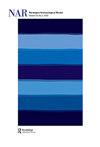居住、仪式和统治:中世纪早期爱尔兰皇家场所的最新技术
IF 0.8
3区 历史学
0 ARCHAEOLOGY
引用次数: 1
摘要
这篇文章探讨了中世纪早期爱尔兰皇家住宅的性质。通过挖掘的证据,它考察了长期动态、架构和权力网络的关键主题。它提出了一个综合的挖掘证据,经常被忽视的居住元素到省会,随后,询问几个关键的皇家遗址被视为原型住宅的发展。它认为,在许多这样的站点的早期和后期阶段之间存在着重要的区别,这些区别与它们在不同的统治策略中所扮演的角色有关。特别是,仪式、仪式和暴力是早期的关键特征,而居住元素往往只在相对较晚的时候出现。虽然这些变化可能与更广泛的现实政治有关,但有人认为,它们也体现了公元7世纪至9世纪新统治战略中居民焦点的结晶。本文章由计算机程序翻译,如有差异,请以英文原文为准。
Residence, Ritual and Rulership: A State-of-the-Art for Royal Places in Early Medieval Ireland
This article explores the nature of royal residences in early medieval Ireland. Through the excavated evidence, it examines key themes of long-term dynamics, architectures and networks of power. It presents a synthesis of excavated evidence for often overlooked residential elements to provincial capitals, and subsequently, interrogates the development of several key royal sites regarded as archetypal residences. It argues that there are important distinctions between the earlier and later phases of many such sites that relate to their role in diverse strategies of rulership. In particular, ritual, ceremony and violence are key early characteristics, whereas a residential element often only appears relatively late. While these changes may be related to wider realpolitik, it is suggested that they also embody the crystallization of residential foci within new strategies of rulership during the seventh to ninth centuries AD.
求助全文
通过发布文献求助,成功后即可免费获取论文全文。
去求助
来源期刊

Norwegian Archaeological Review
ARCHAEOLOGY-
CiteScore
2.10
自引率
0.00%
发文量
13
期刊介绍:
Norwegian Archaeological Review published since 1968, aims to be an interface between archaeological research in the Nordic countries and global archaeological trends, a meeting ground for current discussion of theoretical and methodical problems on an international scientific level. The main focus is on the European area, but discussions based upon results from other parts of the world are also welcomed. The comments of specialists, along with the author"s reply, are given as an addendum to selected articles. The Journal is also receptive to uninvited opinions and comments on a wider scope of archaeological themes, e.g. articles in Norwegian Archaeological Review or other journals, monographies, conferences.
 求助内容:
求助内容: 应助结果提醒方式:
应助结果提醒方式:


